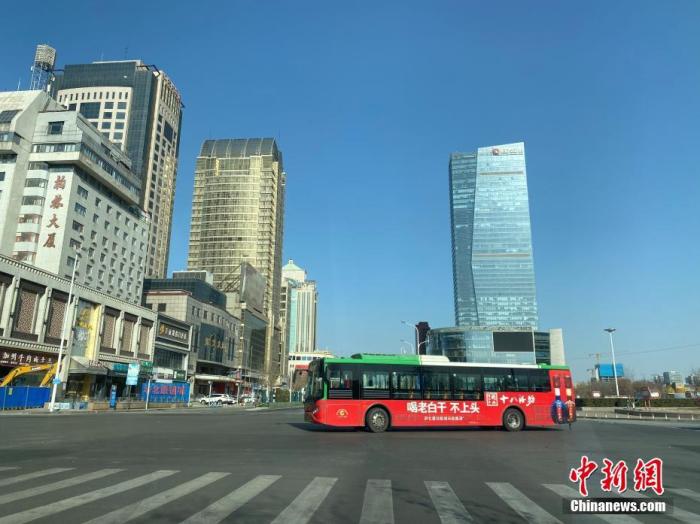China News Agency, Shijiazhuang, January 6th (Reporter Chen Lin and Li Qian) Where does the virus come from?
How to effectively stop the spread of the epidemic?
When will there be an inflection point for the continued new confirmed cases?
…In the past few days, as the number of newly confirmed cases of new coronavirus pneumonia in Hebei continues to increase, the above-mentioned focal issues have aroused social concern.
The picture shows the residents of the community line up for nucleic acid sampling.
Photo by China News Agency reporter Zhai Yujia
Where does the virus come from: The source of infection is being investigated for overseas imports
At present, the cases are mainly concentrated in Gaocheng District, Shijiazhuang and Nangong City, Xingtai, among which Shijiazhuang has more confirmed cases.
Lu Fei, director of the Shijiazhuang Center for Disease Control and Prevention, said that the epidemic presents the characteristics of a large number of patients and family clusters. A large number of cases have occurred in a short period of time, which has brought unprecedented challenges.
The first patient reported in this official report appeared in Xiaoguozhuang Village, Zengcun Town, Gaocheng District.
The town is adjacent to Xinle City, Zhengding County, Shijiazhuang and about ten kilometers away from Shijiazhuang Zhengding International Airport.
Feng Zijian, deputy director of the China Centers for Disease Control and Prevention, said in an interview with CCTV recently that the virus is not a local virus. It is still imported from abroad, and it is likely to be imported from Europe.
Feng Zijian said that the ongoing virus transmission in Shijiazhuang is highly homologous to Xingtai Nangong. The Nangong case has an epidemiological link with Shijiazhuang, which may be caused by a virus transmission.
According to the current situation, the virus seems to have spread in secret for some time.
Lu Fei said that in response to the epidemic, throat swab samples of confirmed cases have been collected and sent to the China Centers for Disease Control and Prevention for full-gene sequencing. At the same time, in conjunction with relevant departments, using technical means, strive to track and determine the source of infection as soon as possible.
The picture shows that the main road in the urban area is obviously sparse.
Photo by China News Agency reporter Huang Xinyao
How to stop transmission: closed-loop control of nucleic acid testing for all employees
On January 3, Shijiazhuang officially announced that it had entered a "wartime state."
With the development of the epidemic, the situation of epidemic prevention and control is severe, and the whole province of Hebei has subsequently entered a "wartime state."
How to effectively stop the spread of the epidemic and make every effort to prevent the spread of the epidemic is particularly important.
Starting on the 6th, people, facilities and forces have been concentrated in key epidemic areas such as Shijiazhuang, Xingtai, and villages and communities to start nucleic acid testing for all employees.
In Shijiazhuang, the provincial capital, the city’s primary and secondary schools and kindergartens ceased offline education and teaching.
The city’s communities and rural areas have begun to implement closed-loop control, and no entry or exit is allowed within three days, and all employees undergo nucleic acid testing.
In Gaocheng District, Shijiazhuang, nucleic acid testing has been carried out before and is expected to be completed on the 6th.
Currently, Shijiazhuang Passenger Terminal and Baifo Passenger Terminal have suspended operations.
Passengers travelling from local airports and railway stations must present a valid nucleic acid negative certificate within 72 hours before boarding or boarding.
The Shijiazhuang Post Administration Office announced that the express delivery industry will suspend the delivery and delivery business within three days.
On the same day, many places in Xingtai City also launched free nucleic acid tests for the whole people.
In order to prevent and control the epidemic, the flow adjustment is also being carried out simultaneously.
A few days ago, Shijiazhuang has coordinated medical staff, public security officers, and township cadres to set up 104 tributary teams to complete the investigation of 18,521 people in Xinhua, Zhengding, Gaocheng, and Xinle, and all implement relevant control measures.
On January 6, the local police were diverting vehicles at the exit of a highway in Shijiazhuang, Hebei.
Photo by China News Agency reporter Zhai Yujia
When will the new cases drop: the situation of epidemic prevention and control is grim
Since Hebei reported on the 2nd that there have been new confirmed cases of new coronavirus pneumonia, the number of cases has continued to rise.
As of 24:00 on the 5th, 39 local confirmed cases and 78 local asymptomatic infections are still under medical observation in the province.
Starting on the 6th, the entire Gaocheng District of Shijiazhuang City has been adjusted to a high-risk area, making it the only high-risk area in the country.
How will the Hebei epidemic develop next?
When will the data of newly confirmed local cases and asymptomatic infections decline until it is cleared?
This is a concern of many people.
On the afternoon of the 5th, Ma Xiaowei, director of the National Health Commission of China, led a team to Hebei to guide the prevention and control of the epidemic. Gao Fu, an academician of the Chinese Academy of Sciences, and other experts accompanied him.
According to a report by the "Hebei Daily", during a discussion with Hebei leaders, Ma Xiaowei said that at present, the epidemic situation in Hebei is still in the development stage, and the situation of epidemic prevention and control is severe.
(Finish)

